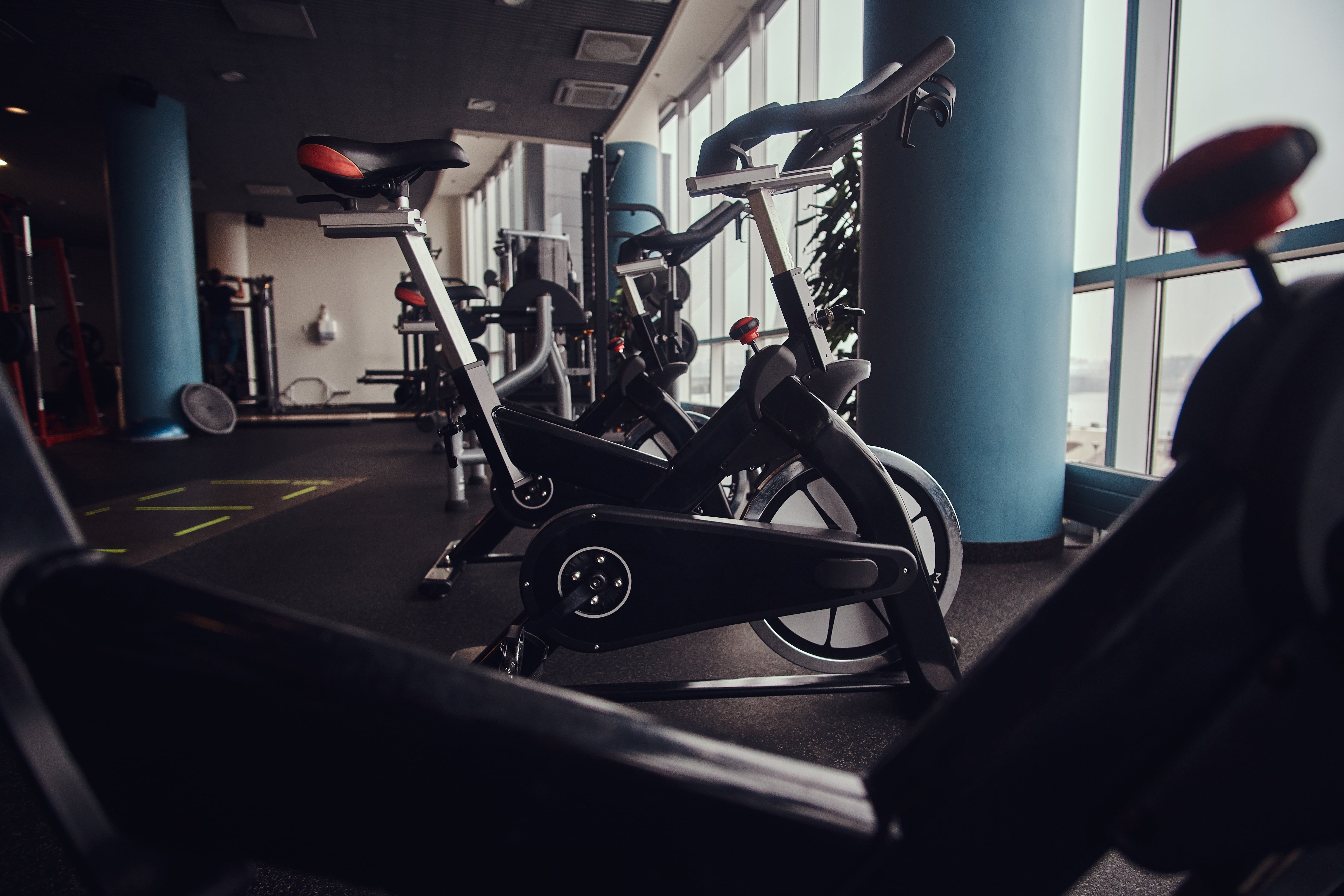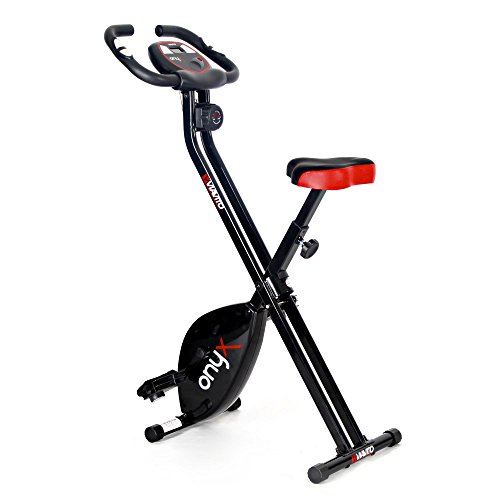What's The Current Job Market For Stationary Bike Exercise Professiona…
페이지 정보

본문
 The Power of Stationary Bike Exercise
The Power of Stationary Bike ExerciseIn the busy world of today, maintaining a healthy lifestyle can typically appear like an obstacle. One reliable and quickly accessible option to this issue is the stationary bike. Whether you're a novice or a skilled athlete, stationary bikes offer a flexible, low-impact, and efficient way to stay fit. This article explores the benefits, correct methods, Stationary Bike Exercise and common concerns surrounding stationary bike exercise, offering readers with an extensive guide to incorporating this kind of workout into their regimen.
Advantages of Stationary Bike Exercise
Cardiovascular Health
 Stationary cycling is an excellent cardiovascular exercise. It assists enhance heart health by increasing heart rate and boosting lung capacity. Regular use can reduce the danger of heart problem, lower blood pressure, and improve cholesterol levels.
Stationary cycling is an excellent cardiovascular exercise. It assists enhance heart health by increasing heart rate and boosting lung capacity. Regular use can reduce the danger of heart problem, lower blood pressure, and improve cholesterol levels.Weight Management
Biking on a stationary bike burns calories and assists in weight reduction. A 30-minute session can burn in between 200 and 300 calories, depending upon the intensity and resistance settings. It is also a sustainable kind of exercise, making it easier to maintain over the long term.
Low Impact
Unlike running or high-impact sports, stationary biking is gentle on the joints. This makes it an ideal option for people with knee, hip, or back problems. It is likewise appropriate for older grownups and those recuperating from injuries.
Muscle Toning
Regular usage of a stationary bicycle can assist tone and enhance different muscle groups, consisting of the quadriceps, hamstrings, calves, and glutes. By changing the resistance, you can focus on various muscle locations and even engage your core and upper body.
Mental Health
Exercise, in general, is understood to boost mental health, and stationary biking is no exception. It launches endorphins, which are natural state of mind lifters, and can help in reducing stress, anxiety, and anxiety. The repeated motion of pedaling can also have a meditative impact.
Convenience
One of the most substantial advantages of stationary bicycles is their convenience. You can use them at home exercise bikes, at the fitness center, or perhaps in a hotel room while traveling. This gets rid of the need for unique equipment or climate condition, making it simpler to stick to a routine good exercise bicycle regimen.
Correct Techniques for Stationary Bike Exercise
To make the most of the advantages and prevent injuries, it's important to utilize the stationary bicycle correctly. Here are some essential techniques:
Adjust the Bike
Seat Height: The seat should be at a height where your legs are nearly completely extended at the bottom of the pedal stroke, with a minor bend in the knee.
Handlebar Position: The handlebars need to be gotten used to a comfy height, usually somewhat greater or lower than the seat, depending upon your preference.
Pedal Straps: If your bike has them, utilize the pedal straps to keep your feet safely in location.
Warm-Up and Cool-Down
Warm-Up: Begin with a 5-10 minute low-intensity pedaling to heat up your muscles and prepare your body for the workout.
Cool-Down: End your session with a 5-10 minute low-intensity pedaling to gradually lower your heart rate and cool off your muscles.
Pedaling Technique
Smooth Pedaling: Focus on a smooth, even pedaling movement. Avoid bouncing or jerking your body, as this can lead to muscle stress.
Resistance: Adjust the resistance to challenge your muscles without overexerting yourself. A moderate resistance is usually enough for the majority of exercises.
Hydration and Safety
Stay Hydrated: Drink water before, throughout, and after your exercise to remain hydrated.
Security: Ensure the bike is steady and secure before beginning. Use a towel or mat to protect the seat and handlebars from sweat.
Integrating Stationary Bike Exercise into Your Routine
Consistency
Frequency: Aim for at least 3-5 sessions each week, depending on your physical fitness goals and schedule.
Duration: Start with shorter sessions (20-30 minutes) and gradually increase the duration as your endurance improves.
Range
Exercise Types: Mix up your exercises to keep them fascinating. Try interval training, hill climbs, or steady-state cycling.
Classes and Apps: Join virtual cycling classes or utilize fitness apps to remain inspired and track your progress.
Progressive Overload
Increase Intensity: Gradually increase the intensity of your exercises by adding more resistance or increasing the period.
Set Goals: Set practical objectives and work towards achieving them. This can assist you stay inspired and see concrete outcomes.
Combine with Other Exercises
Cross-Training: Combine stationary bike workouts with other kinds of exercise, such as strength training, yoga, or swimming, to create a well-rounded fitness routine.
Common FAQs
Q: Is stationary biking as efficient as outdoor cycling?
A: While outside cycling offers the included obstacle of varying surface and wind resistance, stationary biking is still extremely efficient. It provides a controlled environment where you can concentrate on particular muscle groups and maintain a constant intensity. Both types of biking deal significant cardiovascular and muscular advantages.
Q: How many calories can I burn on a stationary bike?
A: The variety of calories burned depends on aspects such as period, strength, and resistance. Usually, a 30-minute session can burn in between 200 and 300 calories. High-intensity interval training (HIIT) can increase this number substantially.
Q: Is stationary cycling ideal for any ages?
A: Yes, stationary cycling appropriates for people of any ages. It is low-impact and can be adapted to various fitness levels, making it an outstanding choice for older grownups, beginners, and those with joint problems.
Q: Can I do stationary cycling if I have knee problems?
A: Stationary cycling is typically considered a low-impact exercise, which implies it is gentle on the knees. However, it's essential to change the bike appropriately and begin with low resistance. If you experience any discomfort, seek advice from a health care specialist.
Q: Do I require to wear special clothing for stationary cycling?
A: While you can wear any comfortable clothing, it's suggested to wear moisture-wicking fabrics to keep you dry and comfortable. If you plan to use the static bike exercise regularly, purchasing cushioned biking shorts can also enhance your comfort.
Tips for Beginners
Start Slow
Begin with short, low-intensity sessions and slowly increase the period and resistance as your fitness enhances.
Use the Monitor
Most stationary bicycles featured a screen that tracks your speed, distance, calories burned, and heart rate. Use this to set and accomplish your fitness goals.
Stay Hydrated
Keep a water bottle helpful and drink routinely throughout your exercise to stay hydrated and perform at your best.
Listen to Your Body
Pay attention to how your body feels. If you experience any pain or discomfort, lower the intensity or stop the exercise.
Mix It Up
To prevent boredom and plateauing, vary your workouts. Attempt different resistance levels, interval training, and virtual biking classes.
Advanced Workouts
For those wanting to take their stationary bike exercise to the next level, here are some innovative workouts to attempt:
High-Intensity Interval Training (HIIT).
Structure: Warm up for 5 minutes, then alternate in between 30 seconds of high-intensity pedaling and 1 minute of low-intensity recovery. Repeat this cycle for 20-30 minutes, followed by a 5-minute cool-down.
Hill Climbs.
Structure: Start with a warm-up, then gradually increase the resistance to mimic climbing a hill. Pedal at a moderate pace for 2-3 minutes, then reduce the resistance for a recovery period of 1-2 minutes. Repeat this cycle for 20-30 minutes, followed by a cool-down.
Endurance Training.
Structure: Aim for longer, steady-state sessions of 45-60 minutes at a moderate strength. This helps construct endurance and cardiovascular physical fitness.
Tabata Training.
Structure: Warm up for 5 minutes, then perform 20 seconds of full-scale sprinting followed by 10 seconds of rest. Repeat this cycle for 4 minutes, then cool down for 5 minutes. You can perform several Tabata sets during your workout.
Conclusion.
Stationary bicycle exercise is a versatile and reliable method to enhance cardiovascular health, handle weight, tone muscles, and boost mental wellness. By following appropriate methods, incorporating it into a consistent regimen, and attempting innovative workouts, you can achieve your fitness goals and enjoy a much healthier, more active lifestyle. Whether you're a novice or an experienced bicyclist, the stationary bike offers a low-impact, hassle-free, and enjoyable way to stay fit.
Additional Resources.
Fitness Apps: Explore apps like Zwift, Peloton, and MyFitnessPal for assisted exercises and development tracking.
Online Classes: Join virtual cycling classes through platforms like YouTube or physical fitness streaming services.
Health Care Professionals: Consult a physical therapist or personal fitness instructor for personalized workout strategies and guidance on kind and technique.
- 이전글You'll Never Guess This Door And Window Repair Near Me's Secrets 25.02.17
- 다음글What's The Job Market For Windows Doors Upvc Professionals? 25.02.17
댓글목록
등록된 댓글이 없습니다.








